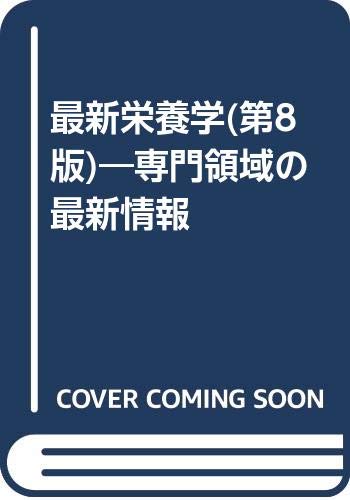1 0 0 0 OA ビタミンE立体異性体の分析
- 著者
- 植田 忠彦 五十嵐 脩
- 出版者
- 公益社団法人 日本農芸化学会
- 雑誌
- 化学と生物 (ISSN:0453073X)
- 巻号頁・発行日
- vol.33, no.11, pp.745-748, 1995-11-25 (Released:2009-05-25)
- 参考文献数
- 19
1 0 0 0 OA 新強化米の女子大生への投与効果
- 著者
- 五十嵐 脩 大関 静枝 仁保 喜之 安藤 寛 毛利 佳世 糸川 嘉則
- 出版者
- 公益社団法人 日本栄養・食糧学会
- 雑誌
- 日本栄養・食糧学会誌 (ISSN:02873516)
- 巻号頁・発行日
- vol.37, no.2, pp.145-150, 1984-04-10 (Released:2010-02-22)
- 参考文献数
- 9
A new type enriched rice, “Shingen, ” which contains vitamin B1, B2, B6, E, niacin and panthotenic acid as vitamins and calcium and iron as minerals, was developed and sold first in Fukuoka Prefecture in 1981. When it is mixed with polished rice at the ratio of 1: 200, the levels of those vitamins and minerals in mixture become to be the same levels as those of unpolished raw rice.We examined the nutritional effect of this new enriched rice on young female students of 20 years old living in Fukuoka City and its suburb. At first they were inquired into the intake of the enriched rice for the last six months and then divided into two groups: 1) intake group was consisted of students who ate the enriched rice at least twice a day as staple food (n=26). 2) no intake group of the enriched rice (control group) ate white rice at least twice a day (n=35). After one month survey of food intake their blood was taken in the morning following overnight fasting. The blood was analysed for its biochemical status as follows: 1) general characteristics of blood (counts of erythrocyte and leucocyte, level of hemoglobin, hematocrit, MCV, MCH and MCHC etc.), 2) vitamin B1level, 3) TPP effect in blood and transketolase activity in erythrocyte, 4) α-tocopherol and triglyceride levels in serum. Also, during this survey, we calculated the daily nutrients intakes of subjects on typical three days.The intake of nutrients of two groups was not different significantly except for vitamin B1 and C of which intakes were higher in intake group than control, but vitamin E intake was not calculated. Blood characteristics were normal in both groups. Vitamin B1 level in blood and transketolase activity in erythrocyte of intake group was significantly higher than that of control group (Figs. 3 a and 4). Similarly, in control group TPP effect was higher than that in intake group showing lower B1level in erythrocyte of contol group. The subjects to be marginal vitamin B1 deficiency was found in high frequency in control group (the number of subjects; less than 30ng/ml were 9, 30-40ng/ml 10, 40-50ng/ml 7 subjects), comparing to two subjects in intake group, whose erythrocyte showed less TPP effect, suggesting no marginal deficiency. From these results it is suggested that vitamin B1 intake should be kept higher level in diet for example by the intake of enriched rice.α-Tocopherol level in serum was not significantly different between both groups. But in control group three subjects showed low α-tocopherol level of less than 5.00μg/ml. Also, F distribution ratio was different significantly in both groups for serum α-tocopherol. This shows thatnew enriched rice intake minimizes the individual variation of serum α-tocopherol level. Triglyceride level in serum was not different in both groups.
- 著者
- 藤原 葉子 大塚 惠 渭原 博 伊藤 信吾 藤崎 誠 猪俣 美智子 苫米地 幸之助 小高 要 五十嵐 脩 奥田 邦雄 美濃 眞 千畑 一郎 橋詰 直孝 糸川 嘉則
- 出版者
- 公益社団法人 日本栄養・食糧学会
- 雑誌
- 日本栄養・食糧学会誌 (ISSN:02873516)
- 巻号頁・発行日
- vol.54, no.1, pp.41-44, 2001-02-10 (Released:2009-12-10)
- 参考文献数
- 4
- 被引用文献数
- 3 3
ビタミンC測定法, および血中の総ビタミンC値の基準値 (参考値) を検討した。健康な女子大生ボランティア54人に, 3日間の食事調査の後, 採血し, ビタミンCを1日200mg含む一定の試験食を3日間供した。3日後に再び採血を行い, 得られた血漿のビタミンC濃度を測定した。測定は3カ所の施設でHPLC法 (お茶の水女子大学, テイジンエスアールラボ) およびアスコルビン酸オキシダーゼ法 (東邦大学) を用いて行い, 各施設での測定値の比較も行った。総ビタミンC濃度の試験食摂取前値と後値では平均値に有意な差はみられないが, 後値ではばらつき (標準偏差) が小さくなり, ビタミンCの一定量摂取が, 血中濃度に影響を与えることが示唆された。前値でビタミンC濃度が低値にあった学生では, ビタミンCを1日200mg, 3日間摂取することで, 血中濃度は0.62mg/dL以上の範囲に入った。異なる測定方法による施設間差は認められず, 従って, 統計的に95%の信頼範囲から血中総ビタミンC濃度の基準値は0.70-1.38mg/dL (HPLC/ECD法) となった。この値は栄養所要量算出の際に基準とした値 (0.7mg/dL)とも一致した。
1 0 0 0 IR 漁業機械に関する研究-1-底曳船の綱取り装置について
- 著者
- 小林 喜一郎 五十嵐 脩蔵 見上 隆克 佐藤 秀雄
- 出版者
- 北海道大学水産学部 = FACULTY OF FISHERIES, HOKKAIDO UNIVERSITY
- 雑誌
- 北海道大学水産学部研究彙報 (ISSN:00183458)
- 巻号頁・発行日
- vol.18, no.2, pp.69-72, 1967-08
1 0 0 0 最新栄養学 : 専門領域の最新情報
- 著者
- Barbara A. Bowman Robert M. Russell [編] 五十嵐脩 [ほか] 翻訳編集
- 出版者
- 建帛社
- 巻号頁・発行日
- 2002

